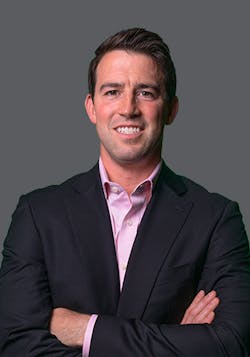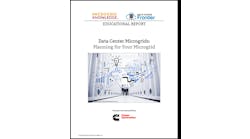Scale Microgrid's CEO Ryan Goodman Talks about Running through Walls to Change the World
Ryan Goodman, CEO and co-founder of Scale Microgrid Solutions, was upbeat when we spoke last week — and he had reason to be.
His seven-year-old company had just closed on a $225 million non-recourse project finance debt facility in a deal led by KeyBanc Capital Markets and City National Bank. Announced March 9, the news marked one of three big moves this month indicating that Scale Microgrid is being true to its name — the small company (under 100 employees) is scaling. In early March, Scale purchased 13 solar projects across 23 sites in various locations and later in the month obtained 100 MW of community solar in New York from Netherlands-based CSG-Gutami.
Backed by Warburg Pincus, Scale has also developed and acquired several microgrids in recent years that serve a range of industries, including food, cannabis, electric fleets, education, water treatment and city services.
Now Goodman faces one of those good problems to have: He needs more employees. “We're continuing to double and double and double. So we're hiring very aggressively,” he said.
The evolution of Scale Microgrid
At its core, and as its name implies, Scale Microgrid is a microgrid development company. But along the way, it leveraged a unique feature of microgrids — their use of multiple generation resources — to grow its business more broadly. Scale took the development and technical expertise it gained working with the various components found within microgrids — such as solar — to branch into other forms of distributed energy. For example, Scale Microgrid last year inked a deal to make $55 million of capital available to solar developer Urban Energy for community solar.
“We said we're already fully financing microgrids. Why don't we fully finance other stuff? And so we're working with a lot of developers to provide them with capital to help build distributed energy assets,” Goodman said.
Because of its microgrid experience, the company’s team is able to think through the risks and help distributed energy developers “pull projects over the line when they inevitably hit the barrier that all projects eventually hit,” he said.
The $225 million debt facility that was announced last week will allow the company to fund the construction and operations of microgrids, combined heat and power systems, community solar, rooftop solar, battery energy storage systems, and microgrid electric vehicle infrastructure projects.
While such financing is common to solar, this is the first time it's being made available across a range of distributed energy technologies, according to Goodman.
“This deal serves as proof that the renewable energy landscape is changing. Microgrids, by their nature, incorporate a number of different technologies — and capital providers’ willingness to step up and support a diverse, first of its kind portfolio further supports Scale’s vision of bringing microgrids and DERs to the masses,” Goodman said when the financing was announced.
KeyBanc Capital Markets acted as joint lead arranger and structuring administrative agent on the loan. City National Bank also contributed as joint lead arranger, and Energetic Insurance provided a credit insurance policy enabling access to the bank lending market. Black & Veatch was an independent engineer to the lenders. Wood Mackenzie delivered market forecasts. Allen & Overy provided legal counsel, and Foley Lardner served as lender counsel.
The company's future?
While the company is growing "tremendously," Goodman said he's not sure what its future will ultimately look like. He does know that he wants to build a “big business that makes a big impact,” fulfilling the company’s vision to power the world with distributed energy.
And all of this comes as the Inflation Reduction Act of 2022 gives Scale – and other microgrid and distributed energy resource (DER) companies – a boost through federal tax incentives for microgrid controllers and an array of other incentives and grants for distributed energy.
“It’s definitely pouring fuel on the fire,” Goodman said. “We’ve already seen that it has a good impact both in terms of [customer] interest and also in terms of making projects that previously may not have penciled, pencil. It’s a phenomenal boon for our industry.”
That’s not to say the microgrid industry is devoid of obstructions. Goodman pointed to interconnection delays and said that he would like to see interconnection requirements simplified or standardized. Another ongoing problem is lack of understanding among customers about microgrids. “We spend a lot of time trying to educate the market,” he said.
Help Wanted
And then there is Goodman’s good-to-have problem: the search for workers to meet the demand for microgrids. The company has so far had a stable roster of employees with only one leaving voluntarily, he said.
“It's a statistic I'm very proud of, but speaks to the culture that we have and the aligned vision that we all have,” he said.
What kind of new employee is the company looking for?
“It's across the board. We're a vertically integrated distributed energy platform. So that includes business development, engineering, project management, asset management, financing, legal,” he said.
More broadly, he seeks self-starters who are mission driven and act like owners.
“I tell everyone this is not a nine to five job. Everyone in our company is trying to run through walls to change the world,” Goodman said.
Interested in microgrids? Join us in Anaheim, California May 16-17 for Microgrid 2023: Lights On!









